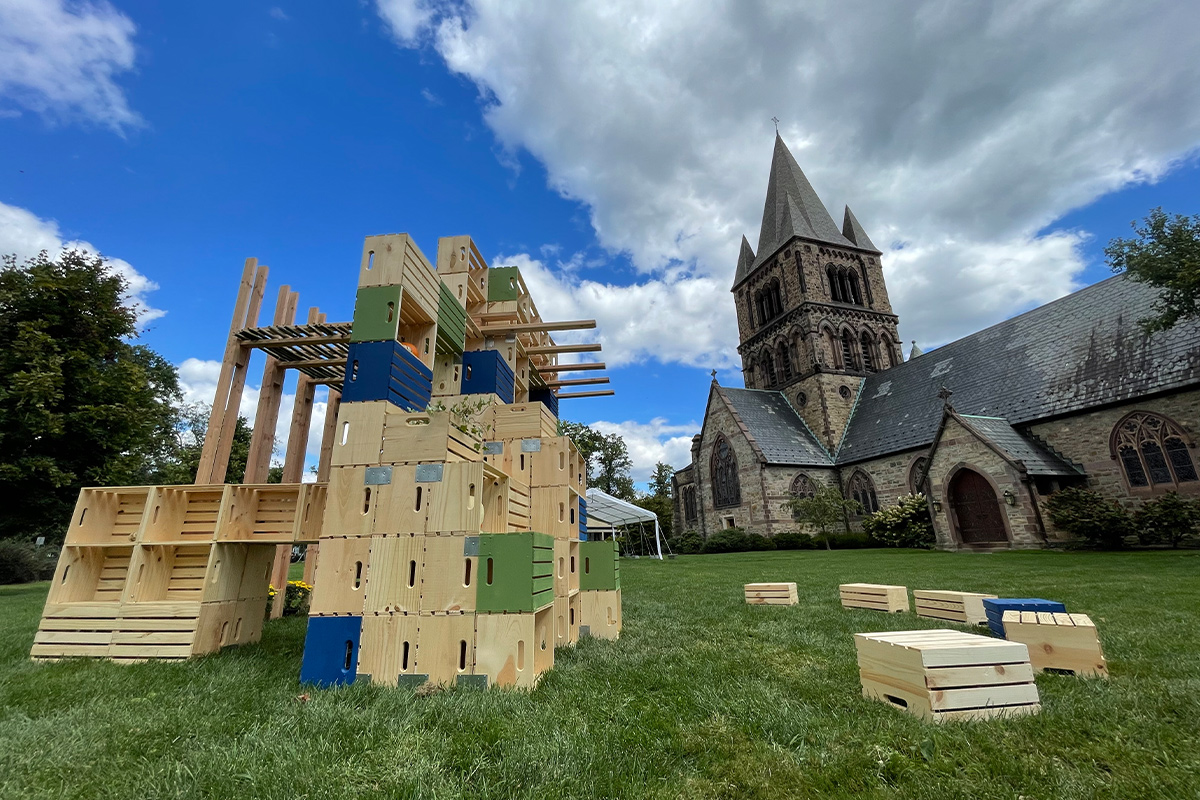If you were to walk around Princeton, New Jersey this week, you might notice that the town has a few new features. Entering Palmer Square, you would spot the blue-and-white shell of a hexagonal structure across from some picnic tables; in the shadow of the Trinity Church, seasonal gourds tucked into stacked boxes would invite you to admire them. These whimsical sites have appeared throughout the city, and no two are alike. But, as a nice man at the Princeton YWCA asked me and Alma editor Molly Tolsky when we popped in to use the bathroom, what are they?
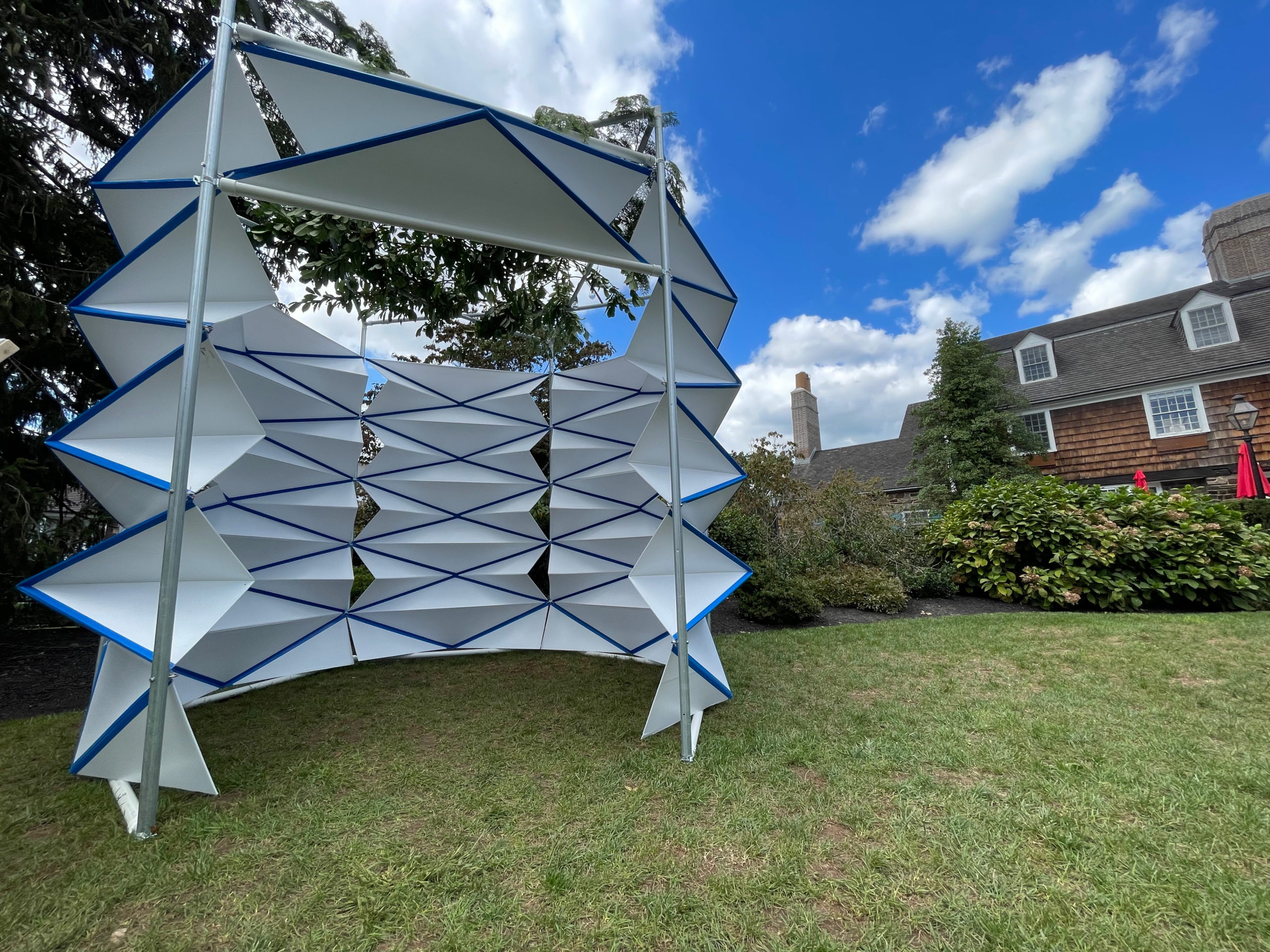
I told him that they are sukkahs. “What-kahs?” he said. So I explained: Sukkahs are erected for the week-long Jewish holiday of Sukkot. According to My Jewish Learning, they are temporary dwellings that “represent the huts in which the Israelites dwelt during their 40 years of wandering in the desert after escaping from slavery in Egypt.” These transient shelters generally must have three walls and a roof, and be sturdy enough to withstand an “ordinary wind.” During the holiday, per the Sukkah Village website, “the goal is to spend as much time as possible in the sukkah, at the very least eating all meals” there. “Some people even sleep in the sukkah.” (I didn’t say it quite so well to YWCA man, but still, he seemed satisfied.)
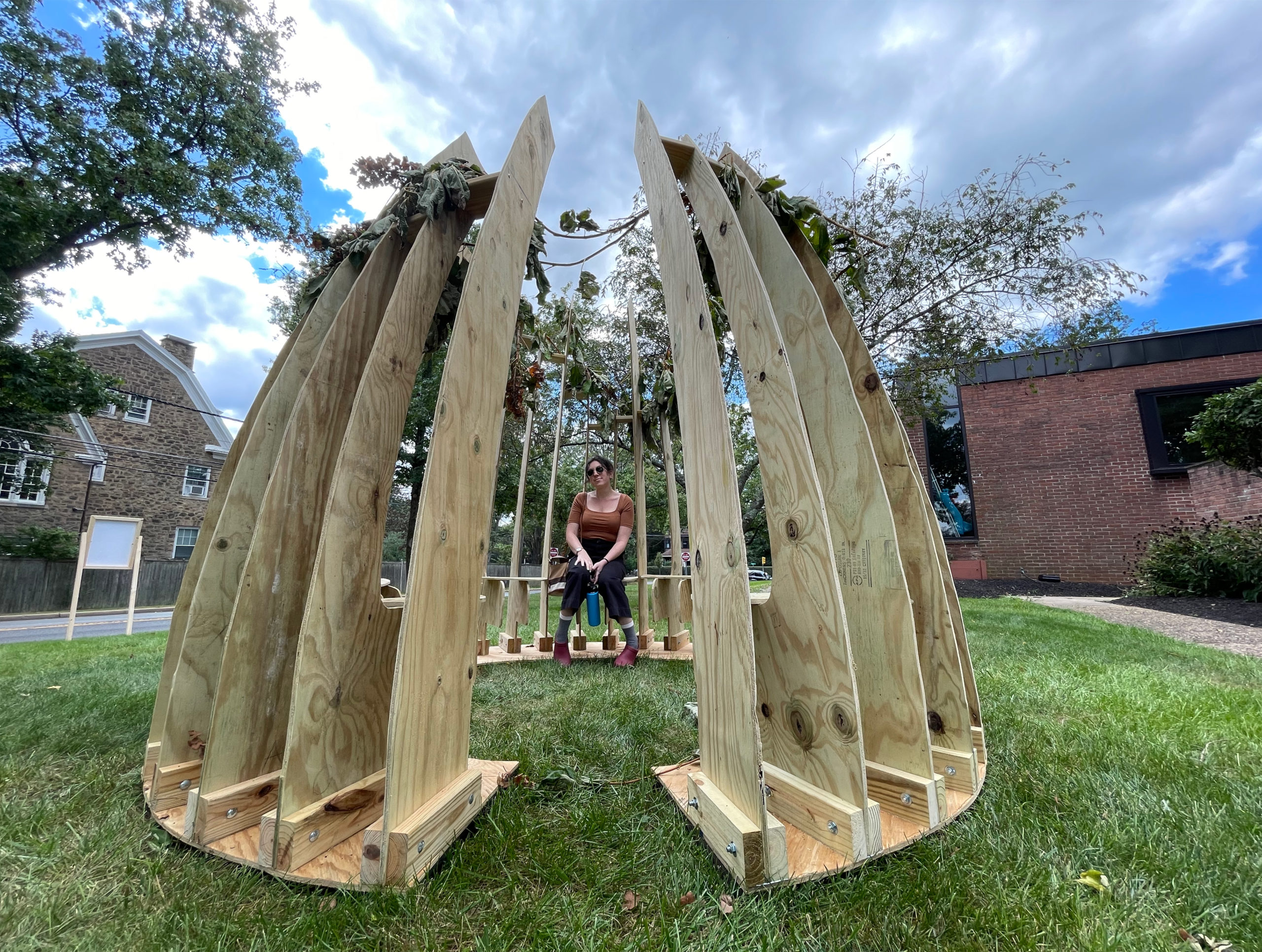
Princeton has momentarily transformed itself into Sukkah Village, full of sukkahs created in response to some of the pressing issues of our day: homelessness, hunger, refugees, sustainability and affordable housing. Most of the structures on display were designed by local architecture and design firms; two were built by contest-winning student design teams from the New Jersey Institute of Technology. Sukkah constructors were given a set of rules from Jewish law. Some of my favorite guidelines: “A sukkah may be built on top of a camel. A whale may be used to make a sukkah’s wall — also, a living elephant. At night one must be able to see the stars from within the sukkah, through the roof.” For Princeton’s Sukkah Village, there were some additional restrictions. Entrants had to provide instructions for assembly and disassembly so that the sukkah could be reused. Each sukkah will be auctioned off at the end of this year’s Sukkot, with proceeds going to charities that relate to the event’s themes.
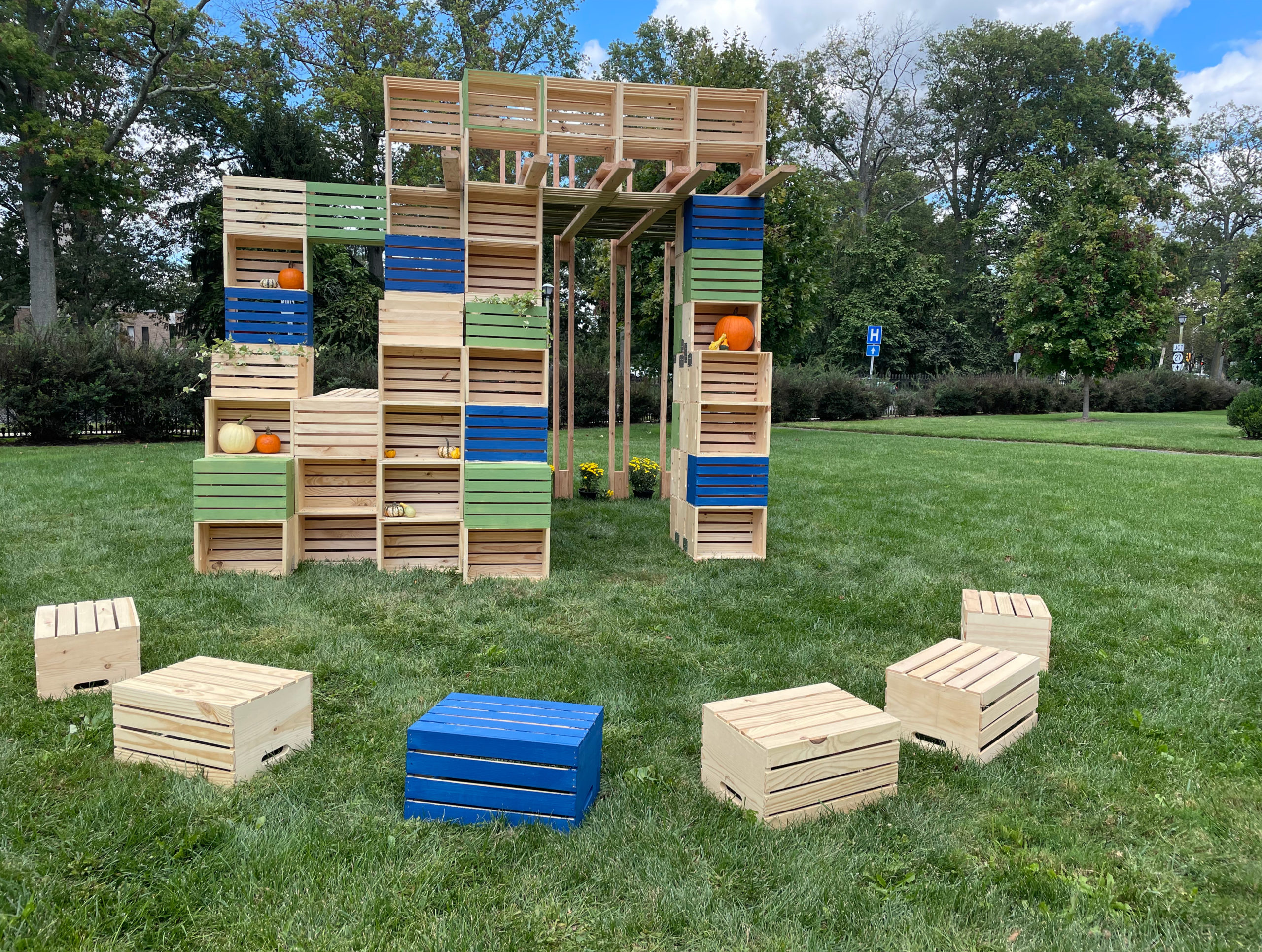
On a sunny September day, Molly and I wandered from sukkah to sukkah, keeping our eyes peeled for Sukkot-esque experiences like we were on a Jewish scavenger hunt. (We were sometimes misled by outdoor dining structures — are all outdoor dining structures sukkahs, we asked ourselves? Discuss.) Sukkah Village nestles nicely into the Princeton landscape. We appreciated that sukkahs were erected in secular and religious spaces alike, and not just Jewish ones either. Though the Jewish Center of Princeton houses six of them — half of all on display — others are located at the Arts Council of Princeton, the YWCA, and at two churches.
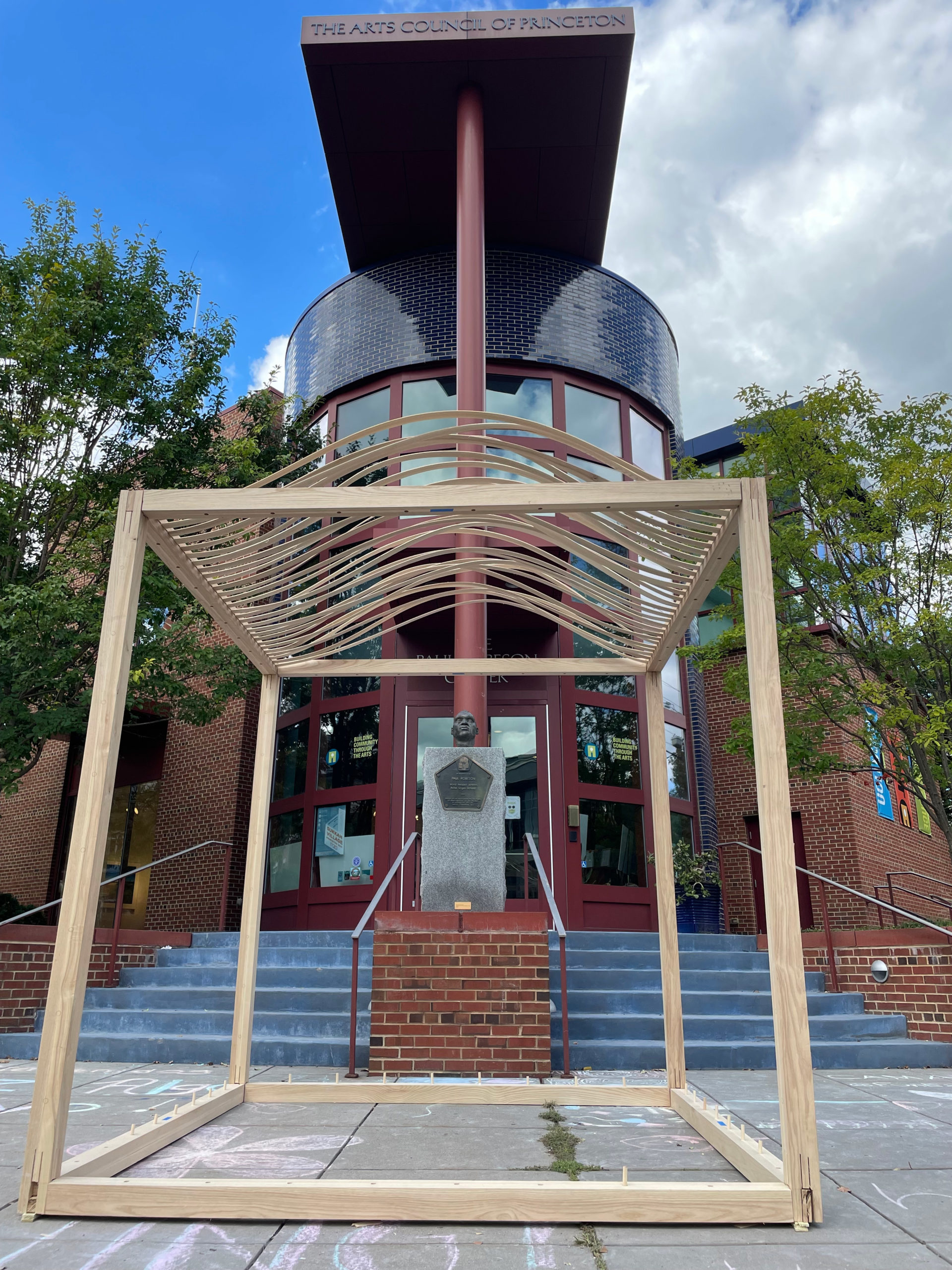
A sign beside each sukkah explains the thought process behind the design. At the YWCA, “Traversing Planes” by Michael Graves Architecture & Design is inspired by the tribes of Israel who wandered the desert: 12 different frames, one for each group, make up the structure. Studio Hillier’s “Rising from Ashes” at the Arts Council of Princeton is cut from the wood of a lost Ash tree, a species under threat from a non-native beetle that’s killing hundreds of millions. Mills + Schnoering Architects’ “palletHIVE” sukkah at the Nassau Presbyterian Church is inspired by the honeycomb evoked in the phrase “the land of milk and honey.”
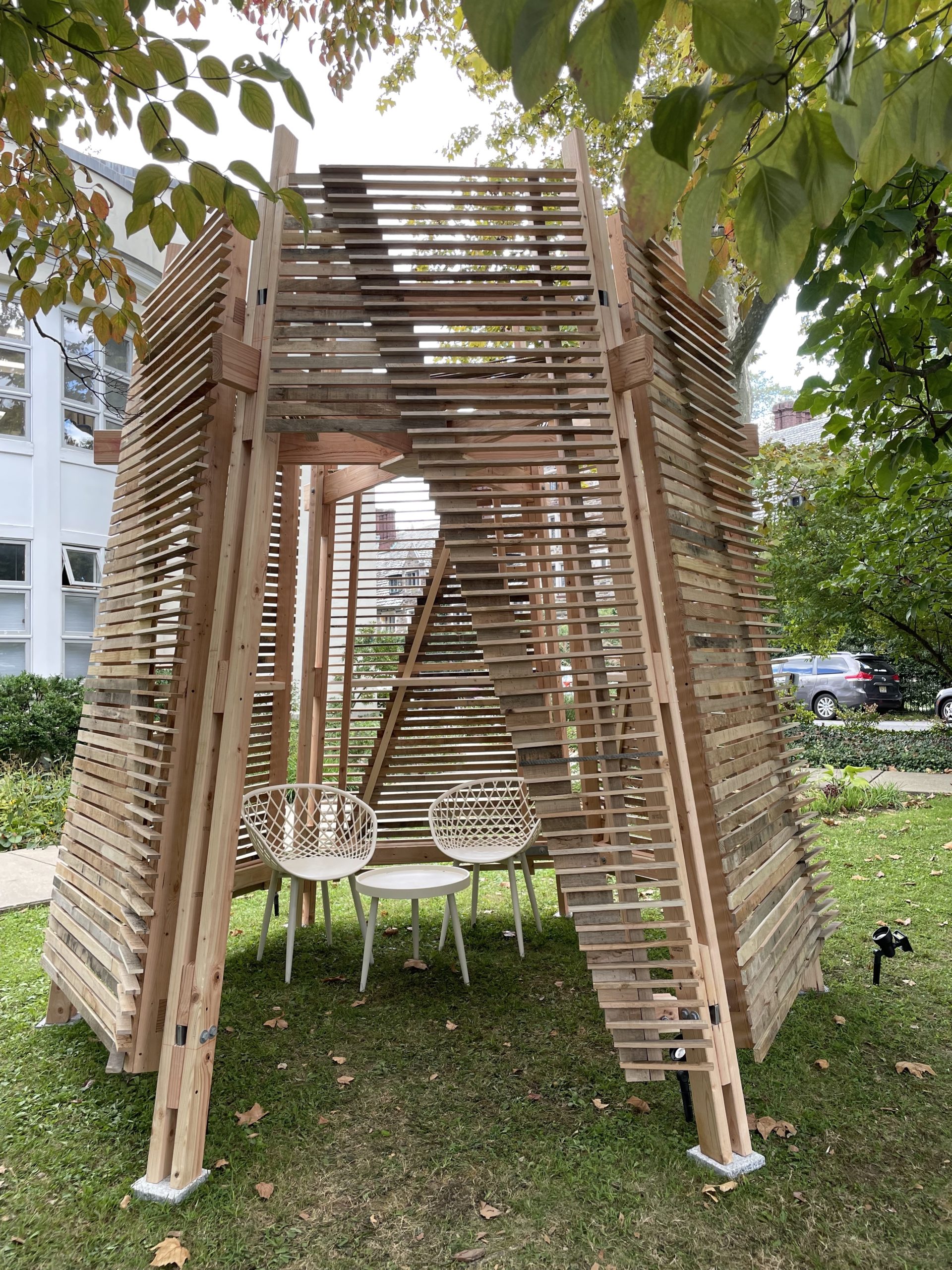
KSS Architects built a sukkah at Trinity Church featuring pumpkins and a bamboo roof. And JZA+D, the Princeton firm of architect and Sukkah Village organizer Joshua Zinder, has contributed multiple sukkahs to the event. “Illuminated Origami” on Palmer Square is lightweight, constructed from recyclable plastic, and the beams of its roof cross over one another to make a Star of David.
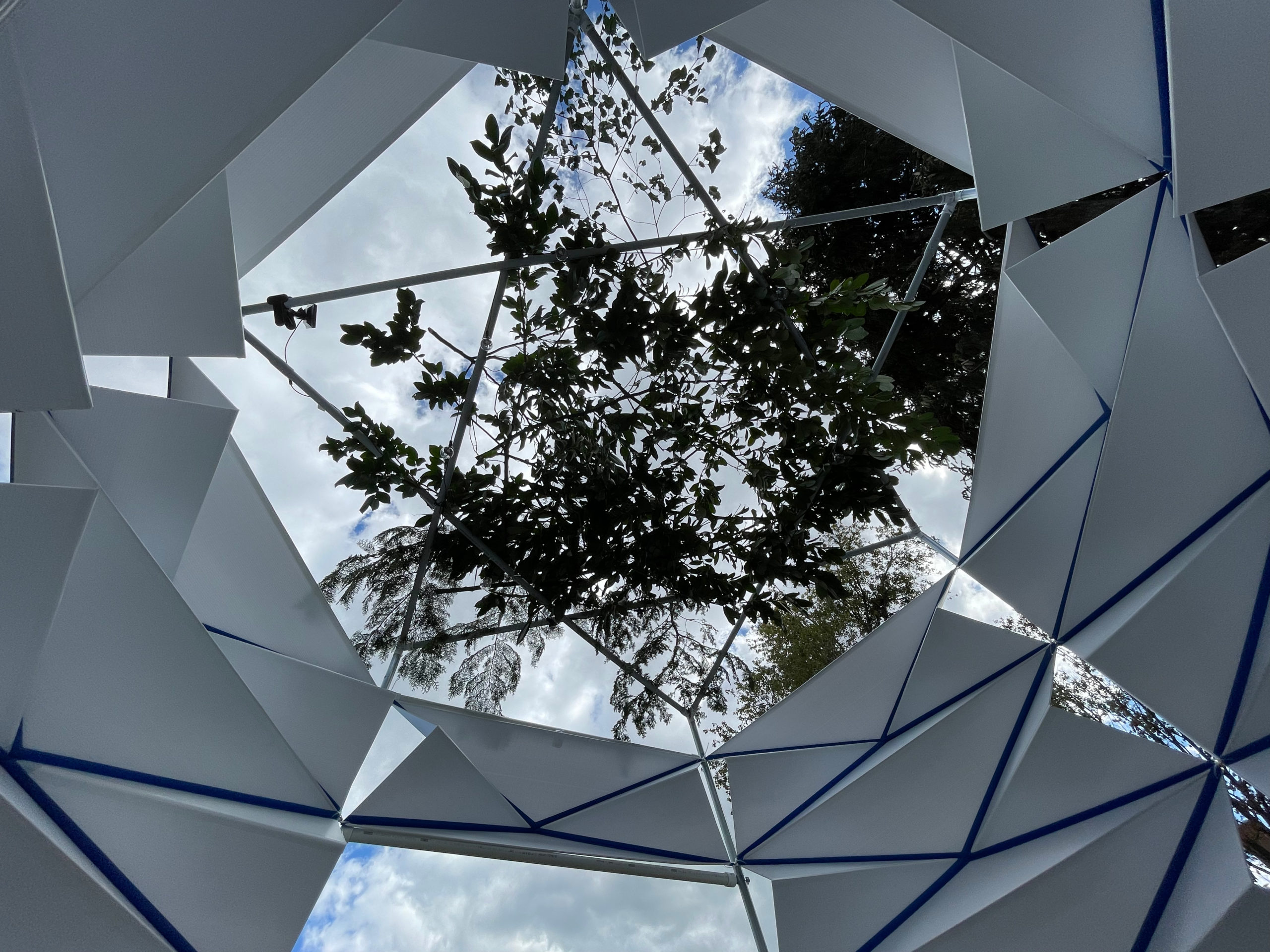
Members of the community wrote d’var torah to accompany the sukkahs. These short essays are as multidenominational as the sukkah sites, authored by both rabbis and pastors. At Nassau Presbyterian Church, David A. Davis tells the story of welcoming refugee families from twelve different countries into the U.S. Rabbi Justus Baird writes about the critical moment in the year at which Sukkot fell for the for the ancient Israelites: the conclusion of the annual harvest and the start of the rainy season. Rabbi Jay M. Kornsgold speaks of Sukkot as a coming-together, an opportunity to strengthen bonds between people. Throughout the week of Sukkot, Sukkah Village has also organized Zoom panels on relevant topics, film screenings, a Sukkah Hop, and a family day.
“Sukkot is a harvest celebration, but it is also meant to highlight the importance and fragility of shelter,” Zinder told The Architect’s Newspaper. “Thanks to the phenomenal professional and student designers involved, and to the commitment of key partner and sponsor organizations, we expect Sukkah Village 2021 will capture the imaginations of eventgoers and inspire them to contribute to solutions for the range of critical issues facing New Jersey, such as homelessness, hunger, and a growing affordable housing gap.”
The Sukkah Village website goes further: “existence is fragile,” it says, “and Sukkot is a time to appreciate the shelter of our homes and our bodies.” As I strolled the streets of Princeton on a beautiful afternoon during a tumultuous year, I did feel grateful — for the moment of peace, for the good in my life, and for the legs that carry me from one temporary dwelling to the next.
You can find more information about Sukkah Village, which runs through September 29, here.
